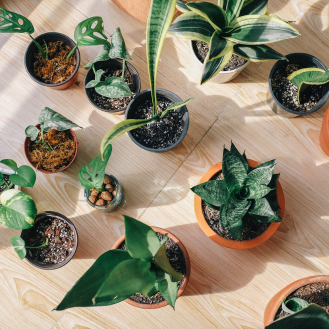Succulent plants have taken the world by storm, and it's no wonder why. With their captivating shapes and vibrant colors, succulents make for stunning additions to any home or garden. But don't let their hardy exterior fool you – these little wonders require some TLC to truly thrive. In this guide, we'll delve into the world of succulents and share tips on how to care for them to ensure they flourish in your care.
Understanding Succulents
Succulents belong to a diverse group of plants that have adapted to thrive in arid environments. They are known for their fleshy leaves and ability to store water, making them resilient to drought conditions. Some popular succulent varieties include Echeveria, Aloe, Jade Plant, and Haworthia, each with its unique characteristics and care requirements.
1. Choosing the Right Succulent
Before you start caring for succulents, it's essential to choose the right ones for your environment. Consider factors such as the amount of sunlight your space receives and the humidity levels. Some succulents thrive in bright, indirect light, while others need more direct sunlight. Research the specific needs of your chosen succulent to ensure it's a good fit for your home or garden.
2. Proper Potting and Soil
Succulents need well-draining soil to prevent waterlogged roots, which can lead to rot. Use a specialized succulent or cactus mix, or create your own by adding perlite or sand to regular potting soil. Ensure that your pots have drainage holes to allow excess water to escape.
3. Watering Succulents
One of the most common mistakes in succulent care is overwatering. These plants are adapted to dry conditions and prefer to be slightly underwatered rather than overwatered. Water your succulents thoroughly but allow the soil to dry out completely between waterings. The frequency varies depending on the succulent type, temperature, and humidity, but a good rule of thumb is to water when the top inch of soil is dry.
4. Sunlight and Temperature
Most succulents thrive in bright, indirect sunlight. Place them near a south- or east-facing window where they can receive several hours of indirect sunlight each day. Avoid exposing them to harsh, direct sunlight for extended periods, as this can scorch their leaves.
Succulents generally prefer warm temperatures, ideally between 60°F to 80°F (15°C to 27°C). They can tolerate cooler temperatures but should be protected from frost.
5. Fertilizing
Succulents don't require frequent fertilization. During their active growing season (usually spring and summer), feed them with a balanced, diluted succulent fertilizer once a month. Reduce or stop fertilizing during the winter when their growth slows down.
6. Pruning and Maintenance
Regular maintenance helps keep your succulents looking their best. Remove dead or yellowing leaves by gently plucking them off. Pruning can also encourage a bushier growth habit.
Conclusion
Succulent care is a rewarding and enjoyable hobby that allows you to appreciate the beauty of these hardy plants. With the right knowledge and care, you can enjoy healthy, vibrant succulents that enhance the aesthetics of your indoor and outdoor spaces. Remember to tailor your care routine to the specific needs of your succulents and don't be discouraged by occasional setbacks. Like any plant, succulents require patience and attention, but the satisfaction of seeing them thrive is well worth the effort. Happy succulent gardening!

